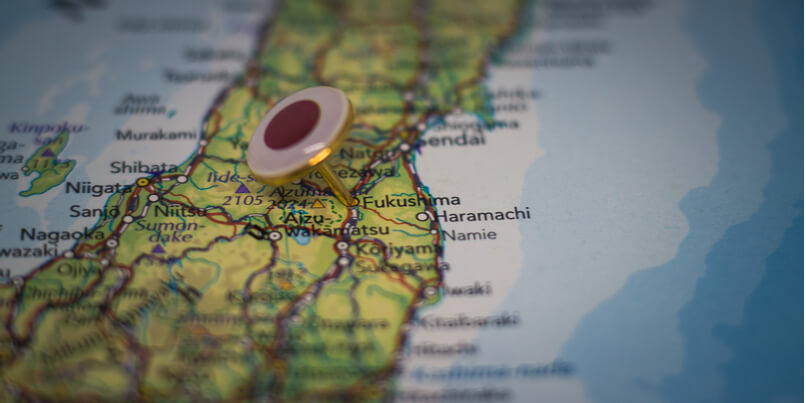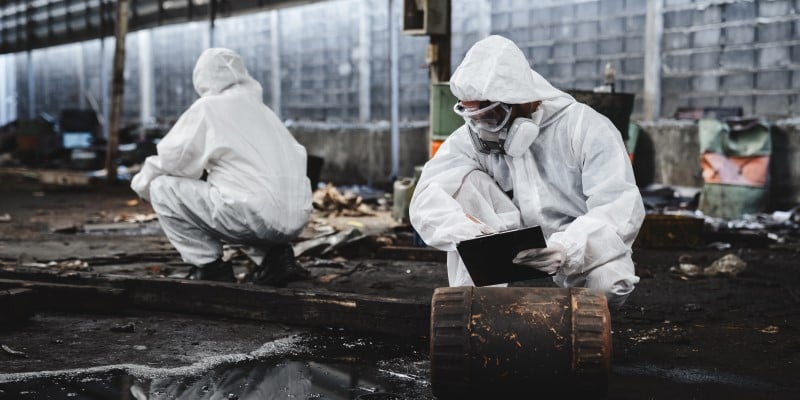 On March 11th 2011, the biggest recorded earthquake in Japanese history triggered a tsunami off Japan's north east coast, causing devastating damage to the Tokyo Electric Power Company (TEPCO) Fukushima Daiichi Nuclear Power Plant and leaving approximately 20,000 dead or missing.
On March 11th 2011, the biggest recorded earthquake in Japanese history triggered a tsunami off Japan's north east coast, causing devastating damage to the Tokyo Electric Power Company (TEPCO) Fukushima Daiichi Nuclear Power Plant and leaving approximately 20,000 dead or missing.
The aftermath of the events at Fukushima would go on to have had an indelible impact not just on the more than 150,000 people living and working in the surrounding area but also on the global approach to nuclear safety, radiation protection and disaster recovery.
Now, ten years on from the incident, a report published by the Nuclear Energy Agency (NEA) explores the challenges that have been overcome, the work still to be done and the lessons that have been learned.
The report examines the origins of the accident, the initial emergency response and the ongoing remediation of the local area.
It also details the ways in which the Japanese nuclear legal framework has been restructured and the future implications that this has had for global emergency management and decision making.
The report's authors set out a variety of recommendations that focus on the need for greater regulatory transparency and a more effective safety culture.
What is clear is that there are some significant issues still to be faced with regards to nuclear security - and in particular as it relates to the long-term clean-up effort, the ongoing task of environmental remediation and the continued revitalisation of the surrounding communities.
Among some of the key conclusions are:
The need for regulatory transparency
There have been significant transformations in the Japanese nuclear regulatory environment post-Fukushima, most notably through the creation of the Nuclear Regulation Authority (NRA) in 2012, however the report recommends that additional measures must also be taken to further enhance a culture of continuous improvement.
While a raft of international activities have already focused on reviewing Japan’s nuclear safety system as a whole, the report also recommends the adoption of a more systematic approach that can provide a deeper level of protection.
Enhanced waste management systems
The continued work on decommissioning of the Fukushima Daiichi Nuclear Power Plant is reliant upon a variety of improved waste management practices.
These include identifying disposal options for nuclear wastes, better handling of treated water held on site, the safe disposal of fuel debris and continued research into the characteristics of unique and unconventional waste forms.
The development of new technologies
With decommissioning work on the site expected to continue for many years to come, there is also expected to be a growing demand for new technologies and methodologies which can aid this challenging work.
Robotic technology, for example, has already been identified as being a key tool in enabling the safe exploration and clean-up of difficult radiological environments and offers the potential for further development both within the nuclear sector and more broadly.
A focus on knowledge management
Amidst the tragic and challenging effects of Fukushima there have also been many moments of learning and exploration which can be used to inform the global nuclear community in the future design and safety of nuclear facilities.
Detailed analysis of the events has also provided a vast amount of scientific and technical knowledge that can be used to further inform future radiological preparedness.
The NEA report encourages the creation of a national and international knowledge framework that can “preserve, analyse and disseminate the hard-won experience from the accident.”
The vital role of radiological preparedness
From a global standpoint, the devastating events at Fukushima can offer some powerful lessons in terms of the approach to safety within nuclear facilities - from the importance of ensuring the availability of robust emergency response systems to mitigating the environmental consequences and optimising post-accident recovery.
In its role as a manufacturer of simulator detector tools for the nuclear, military and industrial sectors, Argon Electronics has built up an extensive portfolio of ultra-realistic radiological training tools.
If you would like to learn more about how the use of simulator-based training can enhance your programmes of radiological instruction please contact a member of the Argon team.







